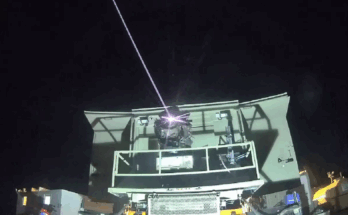
The U.S. Army’s Counter-Small Unmanned Aircraft Systems (C-sUAS) development program is tasked with providing military personnel with technology to detect, track, identify, and defeat various adversary UAS platforms. Just one effort among many, Counter-Small Unmanned Aircraft Systems advance high power microwave technology, command and control decision aids, and high energy lasers, among several other capabilities.
The urgency of this effort is being spurred by the seemingly endless proliferation of UAS that are seen as low-cost, high-reward assets for surveillance, intelligence gathering, and even lethal attacks on U.S. personnel and interests.
The U.S. Army is leading the effort, but all the U.S. military branches are expected to benefit from the program. Since the Army announced the release of the DoD C-sUAS Strategy in January 2021, the program has been progressing steadily and devoting significant time to testing and evaluating the many C-sUAS devices already being offered for sale by multiple contractors.
The multiple contract awards and fielding announcements over the past year for C-sUAS systems to enhance security efforts within the U.S. military are a good indicator of the types of technology the Army is seeking to advance.
In April 2022, Liteye Systems announced the delivery of its SHIELD system to the U.S. Army in 2021 through a multiyear contract to integrate the system payload into a high laser energy (HEL) C-sUAS effort. According to Liteye, the system can be layered with multiple effectors and battle management systems to detect, track, identify and defeat multiple threats.
In July 2022, the U.S. Marine Corps announced the fielding of the Installation-Counter small Unmanned Aircraft Systems (I-CsUAS) which is intended to defeat commercial off-the-shelf Group 1 and Group 2 UAS. I-CsUAS also provides detection, tracking and identification capabilities.
Based on an estimated projection of the FY23 U.S. defense budget, $208 million will be spent on the U.S. Army’s Counter-Small Unmanned Aircraft Systems Development program effort through 2031.
Forecast International’s Electronic Warfare Forecast provides coverage of self-protection and early warning systems for military platforms, both in the skies and on the surface. This service features reports on notable systems such as the Next Generation Jammer and the Eurofighter EW suite, as well as electronic intelligence gathering and radar and missile warning systems currently available or in development. An annual subscription includes 80 individual reports, most with a 10-year unit production forecast. Product comes complete with three Market Segment Analyses covering the markets for: Decoys Dispensers; Electronic Attack Systems; and Electronic Support Measures. Click here to learn more.
Andrew Dardine is lead analyst for Forecast International's Defense Electronic Systems group. He is the primary author of Forecast International's Electronic Warfare Forecast and co-author of Electro-Optical Systems Forecast and C4I Forecast. Andrew is also a regular contributor to FI's Defense & Security Monitor blog, offering insights into developing technologies such as directed-energy and next-generation jamming systems. His analysis of such vital market areas as EO/IR systems and electronic countermeasures technology has been cited in Defense News, Aerospace Daily, and Bloomberg Businessweek, among other news media. He has also written about the electronic defense market for Aviation Week and the Journal of Electronic Defense.




